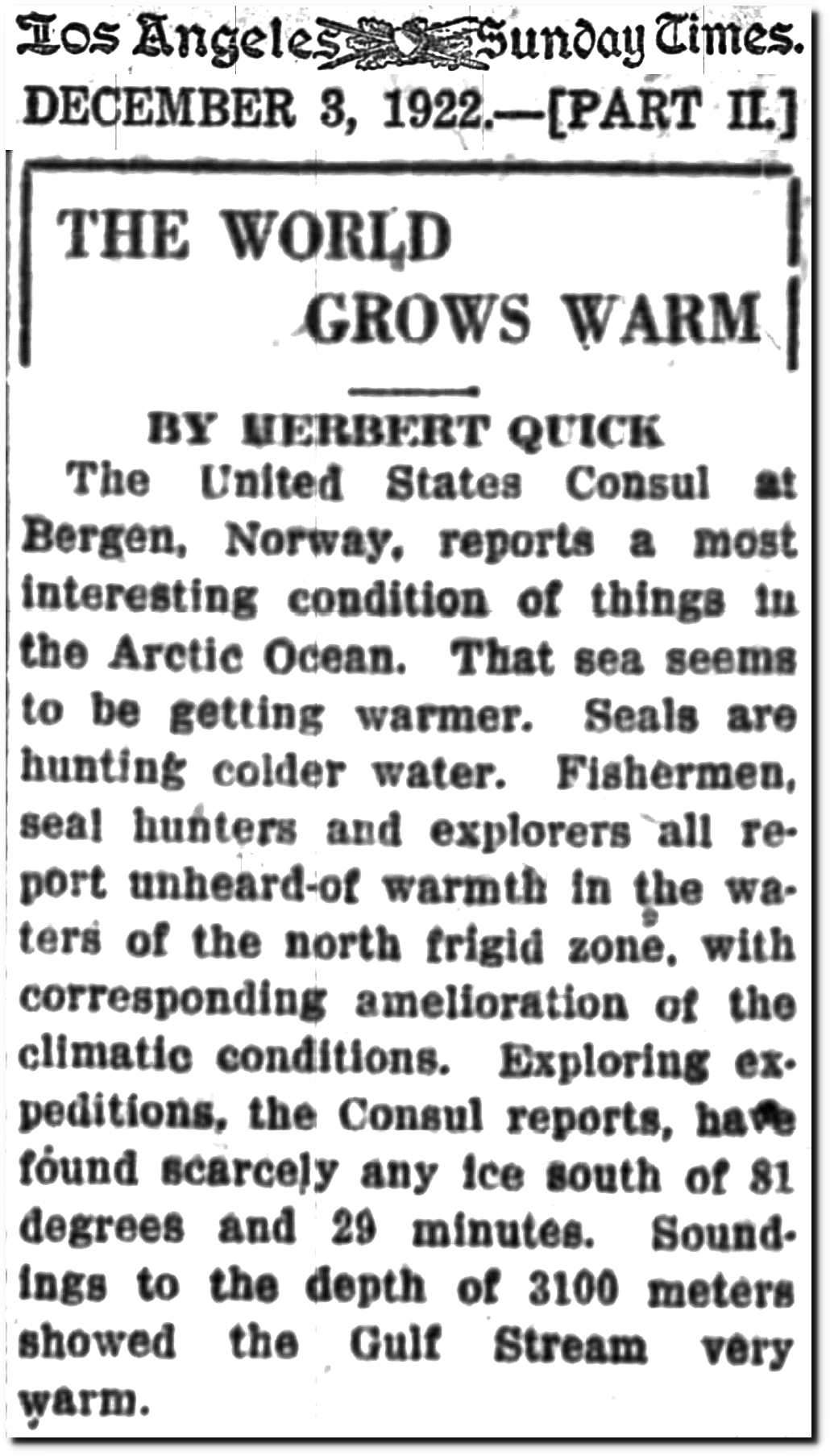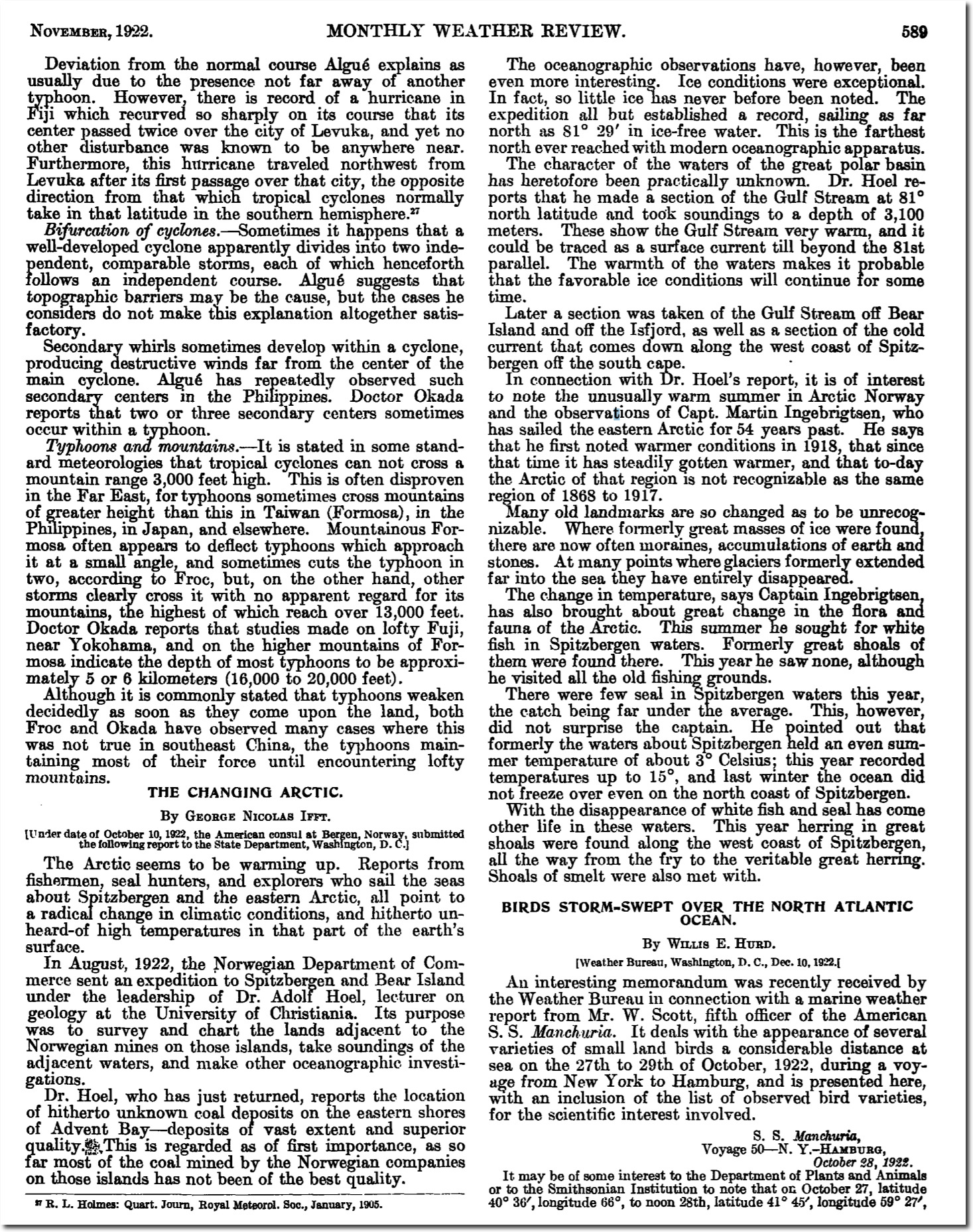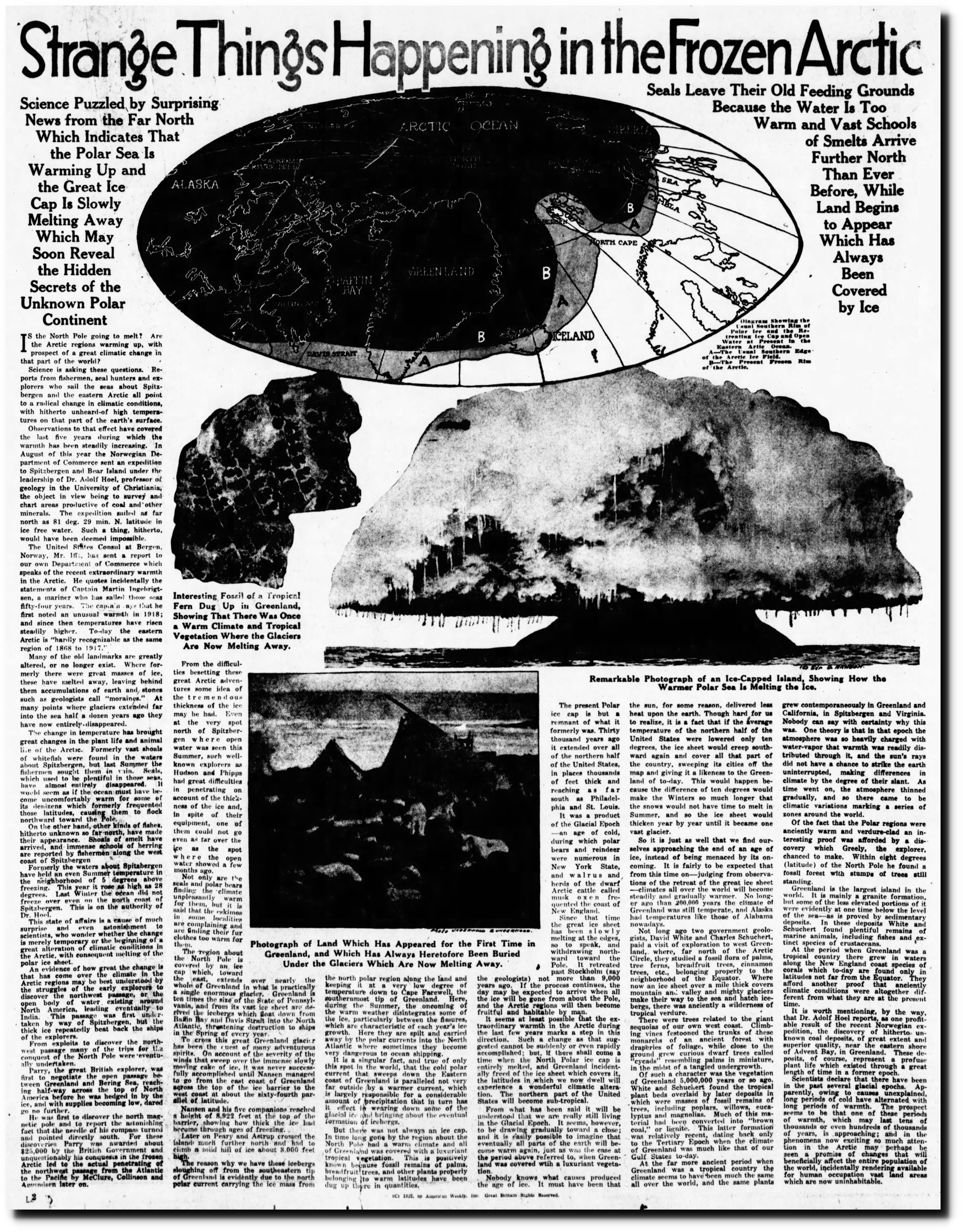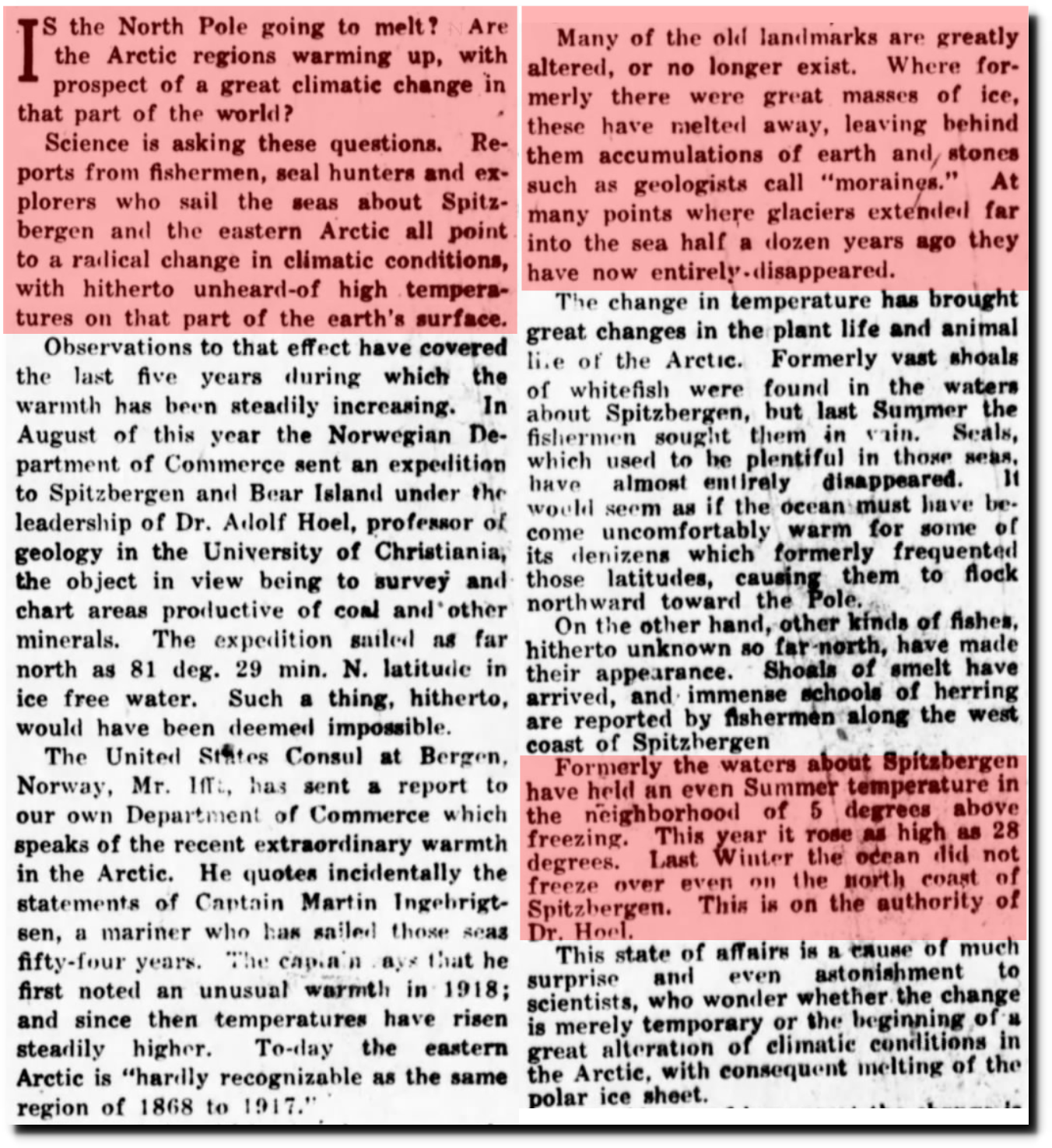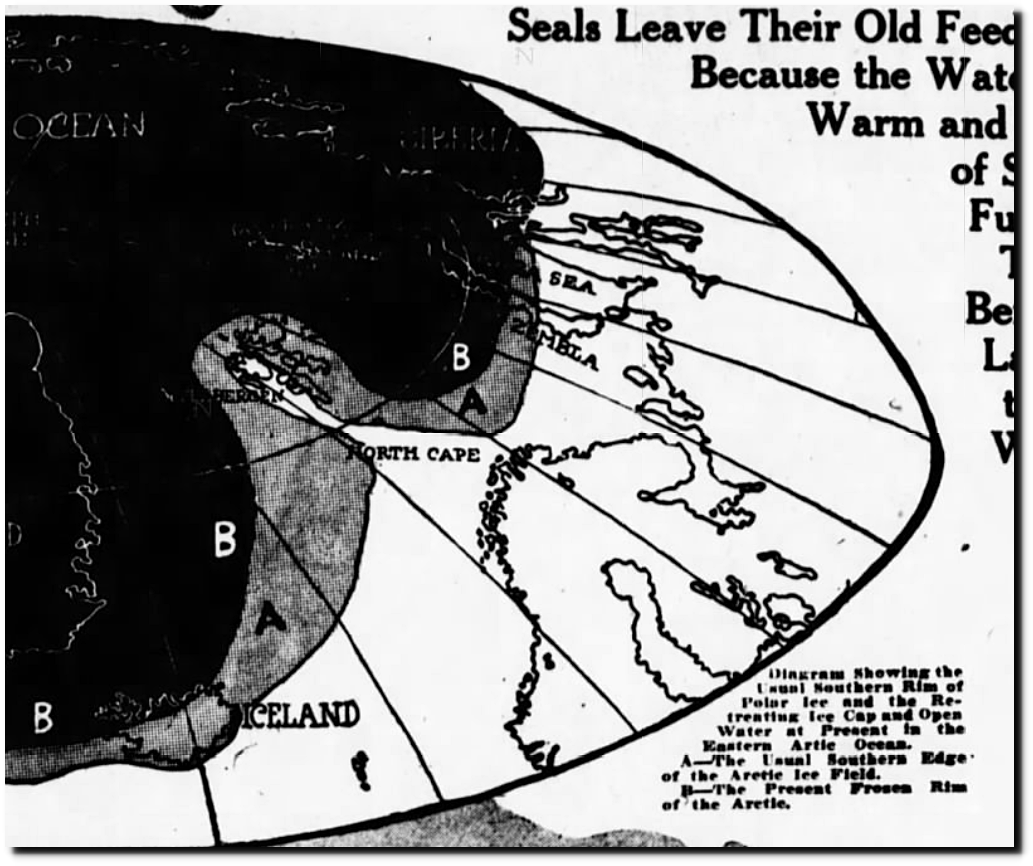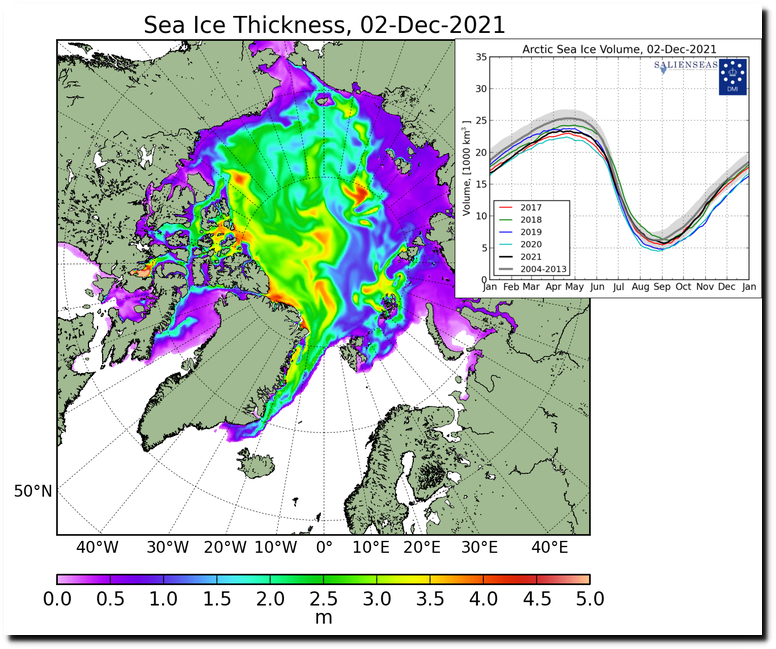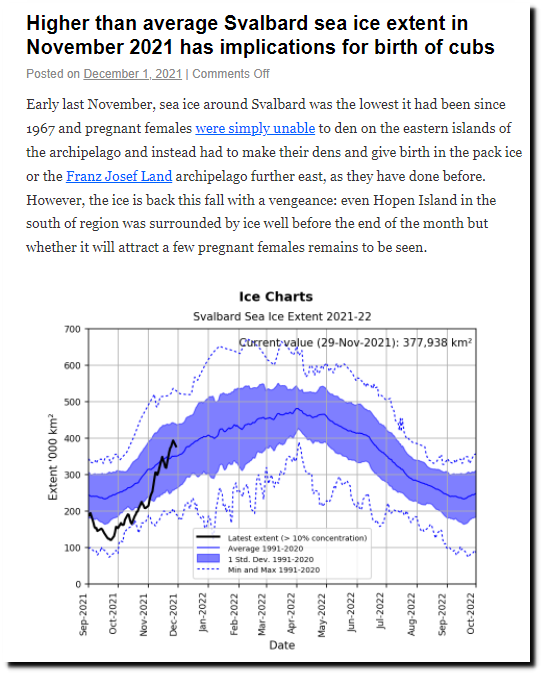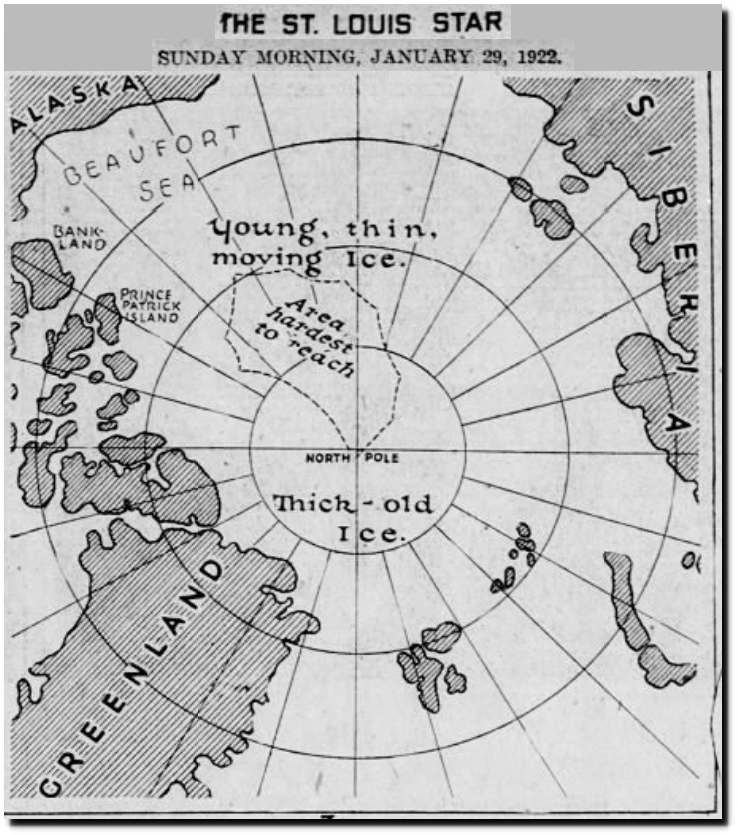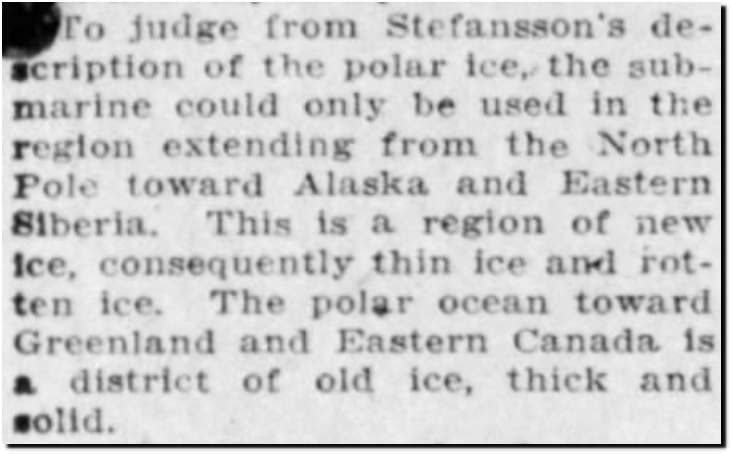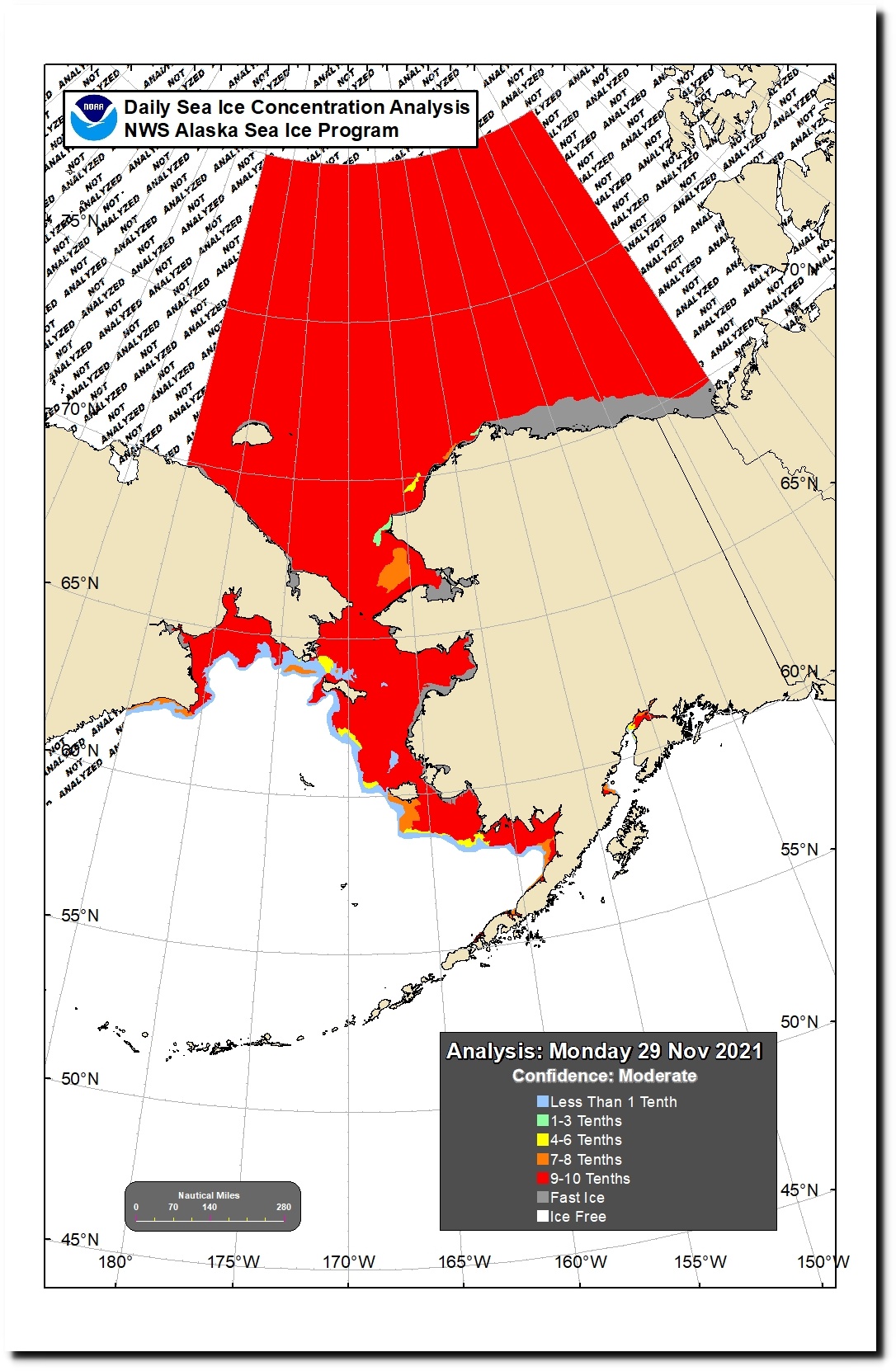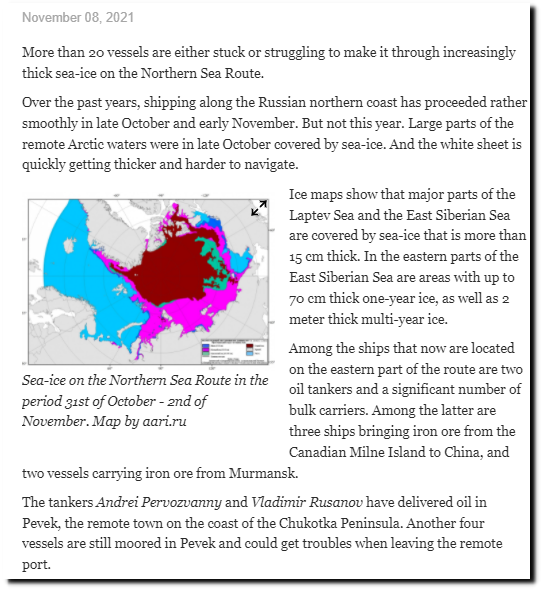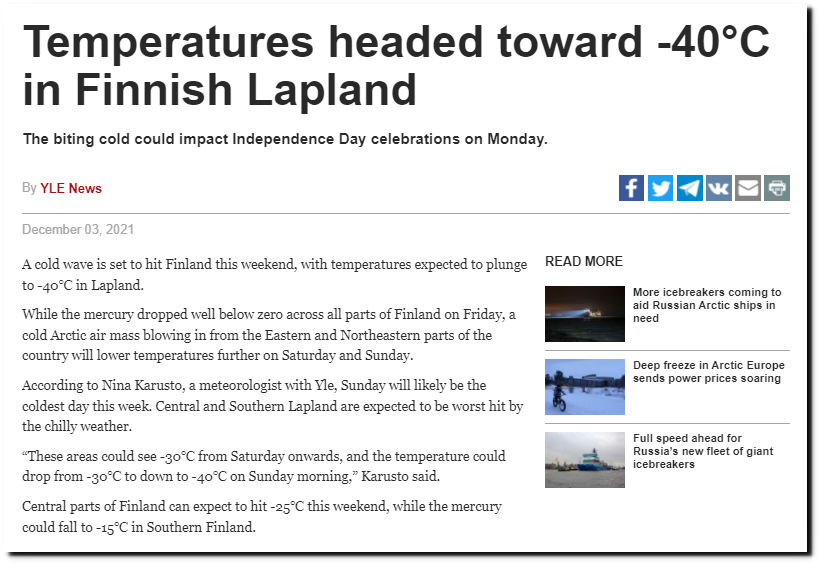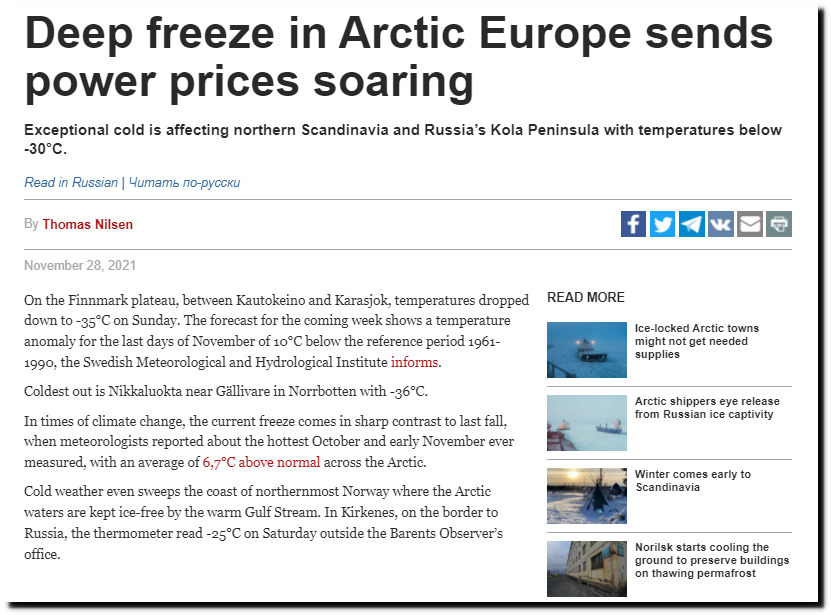One hundred years ago the LA Times reported on unheard-of-warmth in the Arctic.
03 Dec 1922, 20 – The Los Angeles Times at Newspapers.com
This came from a US Weather Bureau article.
The Arctic seems to be warming up. Reports from fishermen, seal hunters, and explorers who sail the seas about Spitsbergen and the eastern Arctic, all point to a radical change in climatic conditions, and hitherto un-heard-of high temperatures in that part of the earth’s surface.
He says that he first noted warmer conditions in 1918, that since that time it has steadily gotten warmer, and that to-day the Arctic of that region is not recognizable as the same region of 1868 to 1917. Many old landmarks are so changed as to be unrecognizable. Where formerly great masses of ice were found, there are now often moraines, accumulations of earth and stones. At many points where glaciers formerly extended far into the sea they have entirely disappeared.
so little ice has never before been noted. The expedition all but established a record, sailing as far north as 81° 29? in ice-free water. This is the farthest north ever reached with modern oceanographic apparatus.
formerly the waters about Spitzbergen held an even summer temperature of about 3 Celsius this year recorded temperatures up to 15°, and last winter the ocean did not freeze over even on the north coast of Spitzbergen
ftp://ftp.library.noaa.gov/docs.lib/htdocs/rescue/mwr/064/mwr-064-02-c1.pdf
No ice formed around Svalbard the entire winter.
03 Dec 1922, Page 63 – The Washington Times at Newspapers.com
But there is lots of ice around Svalbard now.
CICE_combine_thick_SM_EN_20211202.png (758×631)
Earlier in 1922, explorer Stefansson reported the ice between the North Pole and Alaska was young, thin, rotten, moving ice.
29 Jan 1922, Page 35 – The St. Louis Star and Times at Newspapers.com
The University of Alaska sea ice atlas shows there is a lot more ice now than there was 100 years ago in the western Arctic.
“More than 20 vessels are either stuck or struggling to make it through increasingly thick sea-ice on the Northern Sea Route.”
Temperatures headed toward -40°C in Finnish Lapland | The Independent Barents Observer
Deep freeze in Arctic Europe sends power prices soaring | The Independent Barents Observer
Both sides of the Arctic have more ice now than 100 years ago, and climate experts predict rain will start falling at -40 degrees.

